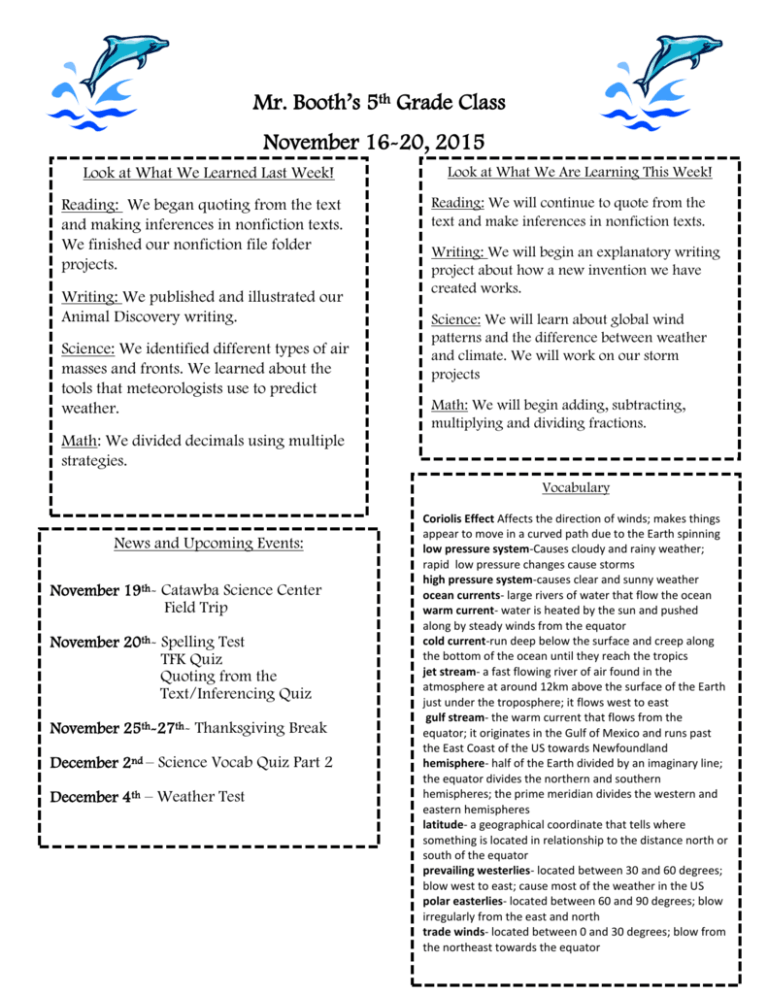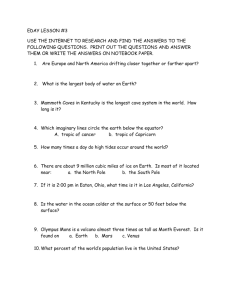November 16th
advertisement

Mr. Booth’s 5th Grade Class November 16-20, 2015 Look at What We Learned Last Week! Reading: We began quoting from the text and making inferences in nonfiction texts. We finished our nonfiction file folder projects. Writing: We published and illustrated our Animal Discovery writing. Science: We identified different types of air masses and fronts. We learned about the tools that meteorologists use to predict weather. Look at What We Are Learning This Week! Reading: We will continue to quote from the text and make inferences in nonfiction texts. Writing: We will begin an explanatory writing project about how a new invention we have created works. Science: We will learn about global wind patterns and the difference between weather and climate. We will work on our storm projects Math: We will begin adding, subtracting, multiplying and dividing fractions. Math: We divided decimals using multiple strategies. Vocabulary News and Upcoming Events: November 19th- Catawba Science Center Field Trip November 20th- Spelling Test TFK Quiz Quoting from the Text/Inferencing Quiz November 25th-27th- Thanksgiving Break December 2nd – Science Vocab Quiz Part 2 December 4th – Weather Test Coriolis Effect Affects the direction of winds; makes things appear to move in a curved path due to the Earth spinning low pressure system-Causes cloudy and rainy weather; rapid low pressure changes cause storms high pressure system-causes clear and sunny weather ocean currents- large rivers of water that flow the ocean warm current- water is heated by the sun and pushed along by steady winds from the equator cold current-run deep below the surface and creep along the bottom of the ocean until they reach the tropics jet stream- a fast flowing river of air found in the atmosphere at around 12km above the surface of the Earth just under the troposphere; it flows west to east gulf stream- the warm current that flows from the equator; it originates in the Gulf of Mexico and runs past the East Coast of the US towards Newfoundland hemisphere- half of the Earth divided by an imaginary line; the equator divides the northern and southern hemispheres; the prime meridian divides the western and eastern hemispheres latitude- a geographical coordinate that tells where something is located in relationship to the distance north or south of the equator prevailing westerlies- located between 30 and 60 degrees; blow west to east; cause most of the weather in the US polar easterlies- located between 60 and 90 degrees; blow irregularly from the east and north trade winds- located between 0 and 30 degrees; blow from the northeast towards the equator











